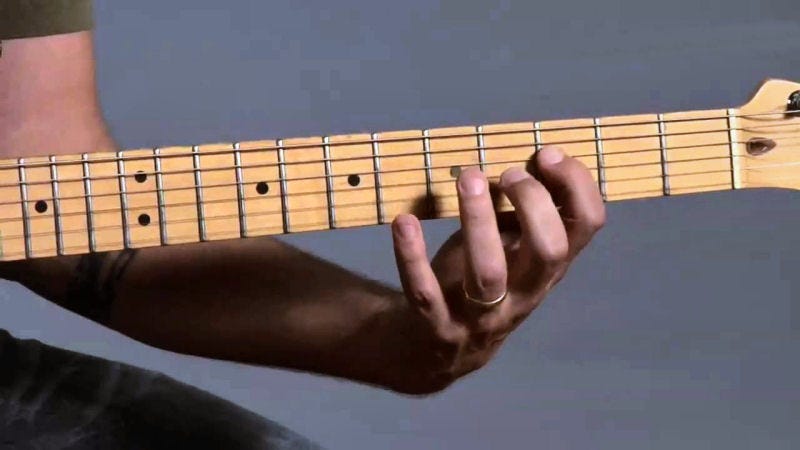Improvisation comes from scales. Chords come from scales. Everything in music comes from scales. Learning how to practice these scales correctly can make a huge difference in the way you play.
In order to play scales efficiently - which will give you much better control over you improvisations - your fingers must be stronger than you already think they are.
Seriously - you have to have controlled power in your digits in order to be able to play the notes the way you want them to sound. Being able to do “hammer-on/pull-offs”, “bends and vibrato’s”, you’ve got to have some strength in your fingers.
Are you ready?
The diagrams below show a basic “1-2-3-4” chromatic “nonsensical” progression of notes that incorporates what I call, “Cross Stringing”. It may not look like much at first glance, but it is not an easy exercise to do. Are you up to the challenge?
How to practice this exercise.
As you can see in the diagrams below, each finger has its position on the fretboard. For this exercise, we will be starting on the “A” on the 6th string. Notice, the next note after A is not on the same string as the A. You have to move over to the 5th string, 6th fret (Eb), then back to the 6th string, 7th fret (B), and then back to the 5th string, 8th fret (F).
Set your metronome at 60-70bmp. Play each note as “1/8th” notes; and that means using “alternate picking” (down, up, down, up).
I mean it! No cheating by doing all downs. It is incredibly important to use the proper 1/8th note technique for this exercise.
Next, we will switch the directions for the notes, using the exact same alternate picking technique. Practice this back-and-forth 20-30 time, so that you get used to the technique.
Okay, so - now that you’ve tried this a few times, let’s continue across the fretboard.
You’re better than half way done! Keep going!
And finally…
That wasn’t so bad. If you would like to challenge yourself and continue this exercise going the opposite direction, just start from the last diagram and work your way back up to the first diagram, starting on the 4th note of each exercise (4-3-2-1).
Trust me, this exercise works great - especially once you’ve gotten used to doing it everyday as a warm-up exercise. Take your time, and don’t rush through the notes just to do them. Make sure the value of every single note gets played correctly.















